In Massachusetts, 11 distinct owl species grace the diverse landscapes, each contributing to the state’s ecological tapestry.
From the iconic Great Horned Owl to the elusive Boreal Owl, these feathered residents are captivating with their unique features and behaviors.
Nestled in the forests, fields, and occasionally urban areas, these owls are more than nocturnal hunters; they symbolize the intricate balance of nature in the Bay State.
Join us on a journey through the night as we unravel the fascinating lives of these 11 owl species, exploring their habitats, behaviors, and occasional appearances.
Whether standard or rare, Massachusetts’ owls add depth to the nocturnal symphony echoing through the state, creating a captivating narrative of wildlife in this northeastern enclave. Stay sharp.
11 Owls in Massachusetts
Explore the diverse owl species inhabiting or occasionally visiting Massachusetts.
From the elusive Long-eared Owl to the imposing Great Grey Owl, discover their unique characteristics, habitats, and occasional appearances.
These owls, whether standard or rare, contribute to the rich avian tapestry of the state, captivating observers with their intriguing lifestyles.
1. Great Horned Owl
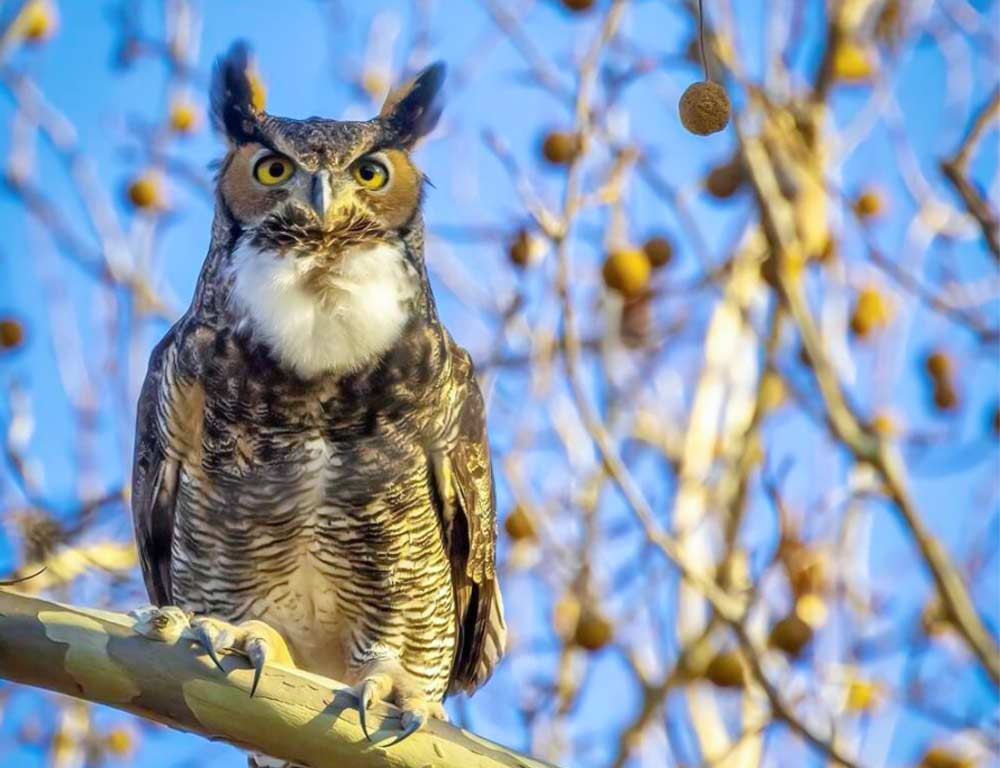
- Scientific name: Bubo virginianus
- Life span: 5 to 15 years
- Size: 18 to 25 inches
- Weight: 2 to 5.5 pounds
- Food: Rodents, birds, mammals, and occasionally larger prey like rabbits
- Wingspan: 3.3 to 4.8 feet
- Status: Common
The Great Horned Owl is a powerful and adaptable predator found throughout Massachusetts. Its tufted “horns” and intense yellow eyes make it a distinctive nocturnal hunter.
Their excellent vision and silent flight make them efficient predators. These owls are versatile in their habitats, ranging from forests and fields to urban areas.
Great Horned Owls are known for their ability to adapt and often thrive near human settlements. They are monogamous and typically establish territories, nesting in trees or using abandoned nests of other large birds.
These owls exhibit a diverse diet, preying on various animals, contributing to their adaptability and success.
2. Snowy Owl
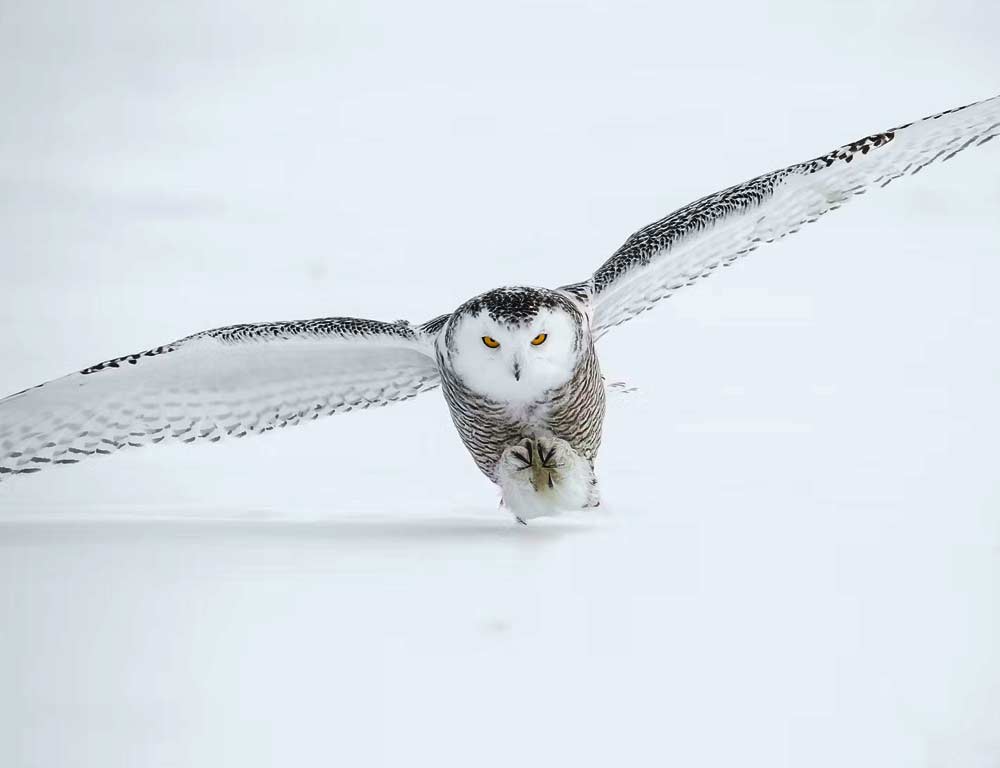
- Scientific name: Bubo scandiacus
- Life span: 10 years
- Size: 20 to 28 inches
- Weight: 3.5 to 6.5 pounds
- Food: Mainly lemmings, also birds and small mammals
- Wingspan: 4.2 to 4.8 feet
- Status: Uncommon, migratory
The Snowy Owl is a stunning, Arctic-dwelling owl that occasionally visits Massachusetts during winter migrations. They are highly adapted to cold climates, with dense plumage providing insulation.
Snowy Owls are known for their daily hunting habits, often seen during the day. When lemming populations decline in the Arctic during winter, they migrate south for food.
They may be spotted in open areas like beaches and marshes in Massachusetts. Unlike most owls, Snowy Owls are nomadic, and individuals may cover vast distances in search of prey.
3. Barn Owl
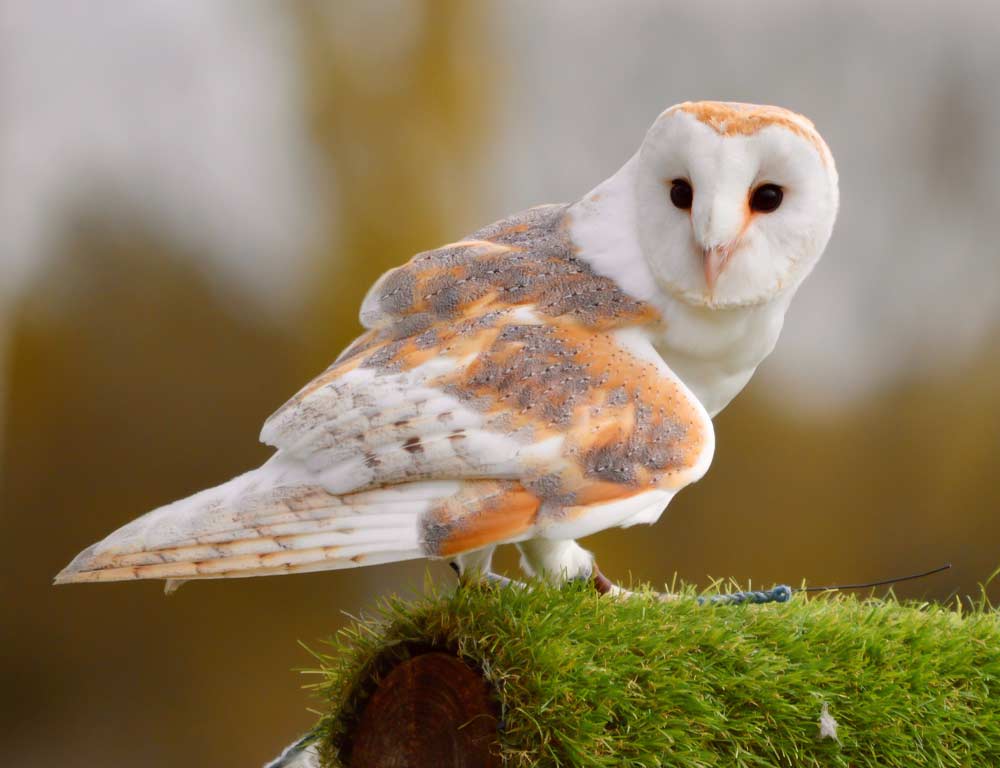
- Scientific name: Tyto alba
- Life span: 2 to 5 years
- Size: 12 to 15 inches
- Weight: 14 to 24 ounces
- Food: Small mammals, especially rodents
- Wingspan: 3.3 to 3.8 feet
- Status: Uncommon, declining
Barn Owls in Massachusetts are recognized by their heart-shaped facial discs and distinctive screeching calls.
These owls prefer open habitats, including farmlands, grasslands, and marshes. Barn Owls are efficient hunters, relying on their excellent hearing to locate prey in the dark.
They often nest in barns, abandoned buildings, or tree cavities. Unfortunately, their population in Massachusetts is declining due to habitat loss and the use of rodenticides affecting their food sources.
4. Eastern Screech Owl
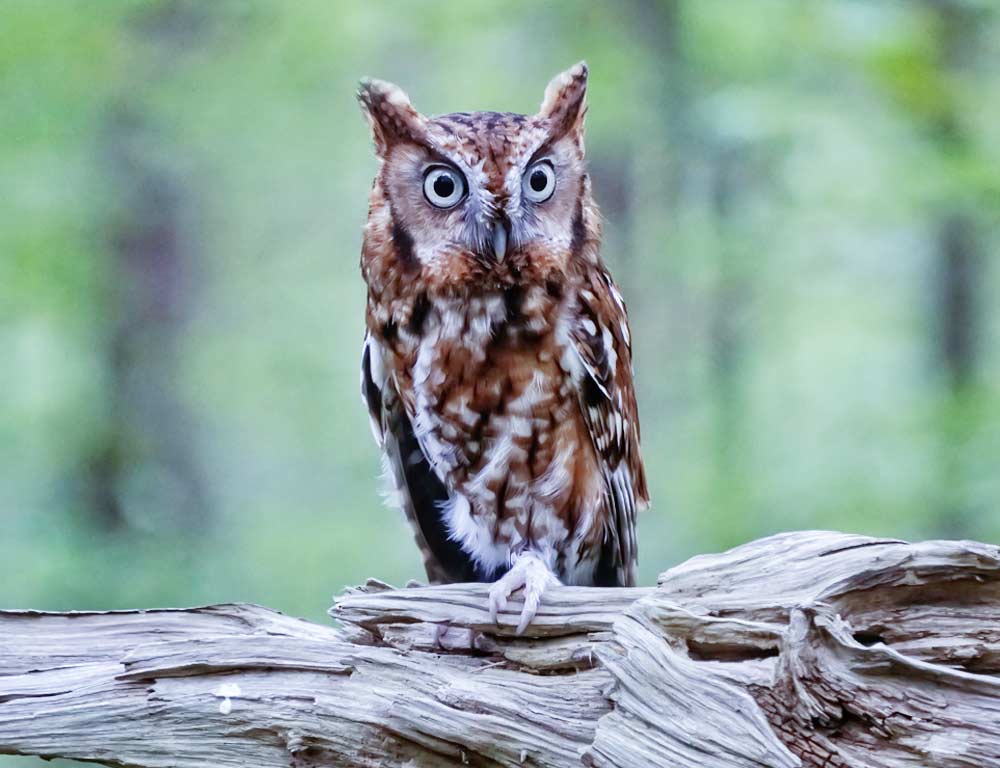
- Scientific name: Megascops asio
- Life span: 5 to 14 years
- Size: 6 to 10 inches
- Weight: 4 to 8 ounces
- Food: Insects, small mammals, birds
- Wingspan: 1.5 to 2 feet
- Status: Common
The Eastern Screech Owl, with its small size and distinctive ear tufts, is a common resident of Massachusetts. These nocturnal hunters are adaptable to various environments, including suburban areas with suitable nesting sites.
They come in two color morphs, gray and reddish-brown, providing excellent camouflage in their surroundings. Eastern Screech Owls are cavity nesters, utilizing natural tree cavities or nest boxes.
They feed on various prey, including insects, small mammals, and birds. Despite their small size, they are skilled predators and contribute to controlling local pest populations.
5. Barred Owl
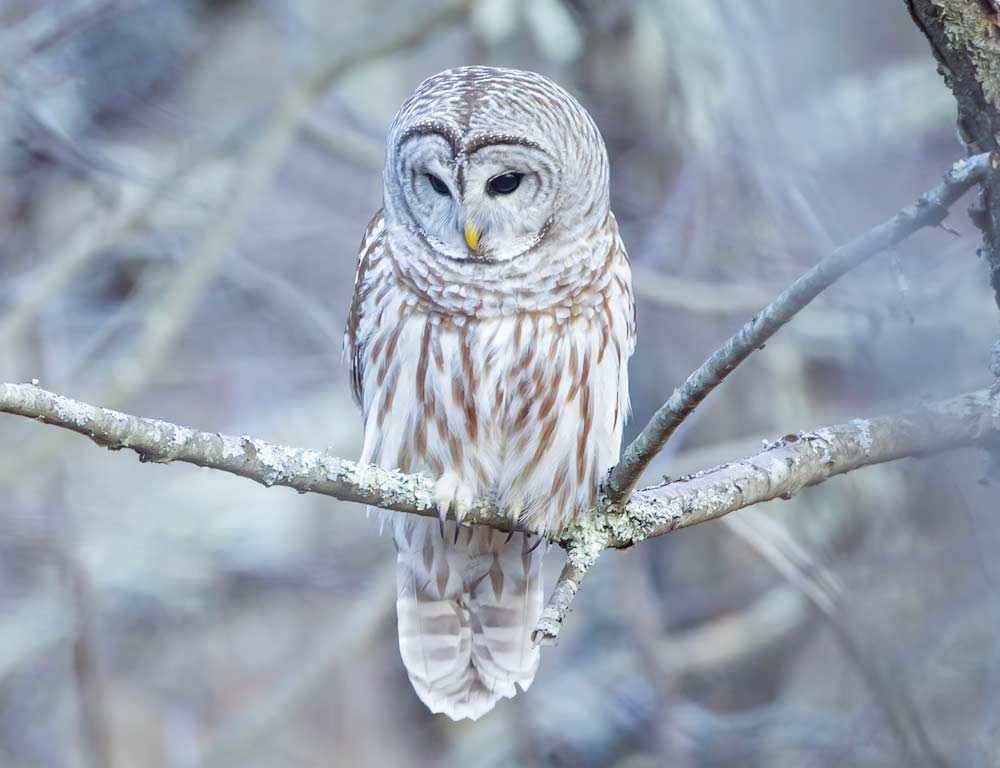
- Scientific name: Strix varia
- Life span: 10 to 23 years
- Size: 16 to 25 inches
- Weight: 1 to 2.3 pounds
- Food: Small mammals, birds, amphibians, reptiles
- Wingspan: 3.3 to 4.4 feet
- Status: Common
The Barred Owl, known for its distinctive hooting calls, is common and adaptable in Massachusetts.
It inhabits a variety of forests, including both deciduous and mixed woodlands. Barred Owls are nocturnal hunters, using their excellent night vision and silent flight to capture prey.
They primarily feed on small mammals, birds, amphibians, and reptiles. These owls are cavity nesters, often taking over abandoned nests of other large birds.
Barred Owls have adapted well to human-altered landscapes and can be found in suburban and urban areas, contributing to their widespread distribution.
6. Short-eared Owl
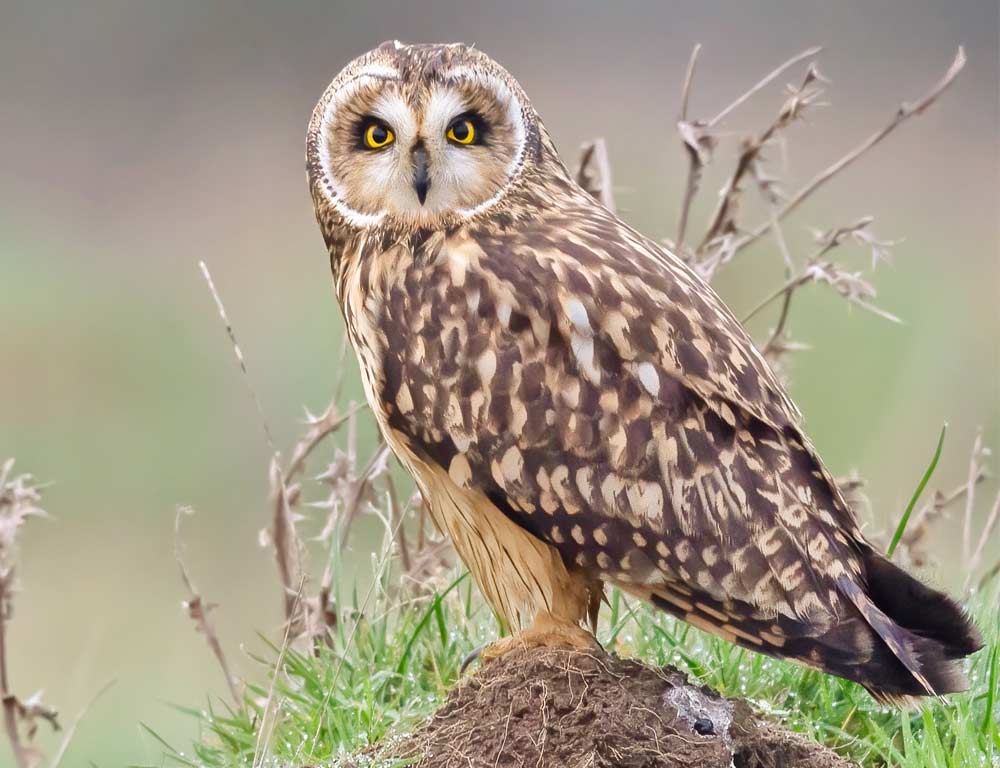
- Scientific name: Asio flammeus
- Life span: 4 to 6 years
- Size: 13 to 17 inches
- Weight: 7 to 17 ounces
- Food: Small mammals, birds
- Wingspan: 2.9 to 3.3 feet
- Status: Uncommon, migratory
The Short-eared Owl is a rare winter visitor to Massachusetts. They prefer open habitats such as grasslands, marshes, and fields. Short-eared Owls are known for their distinctive facial disk and ear tufts.
Unlike many other owls, they are often seen hunting during the day. They rely on their keen eyesight and hearing to locate small mammals and birds.
Short-eared Owls are nomadic and can cover large distances for suitable hunting grounds. During winter, individuals from northern breeding grounds may migrate to Massachusetts for food.
7. Northern Saw-whet Owl
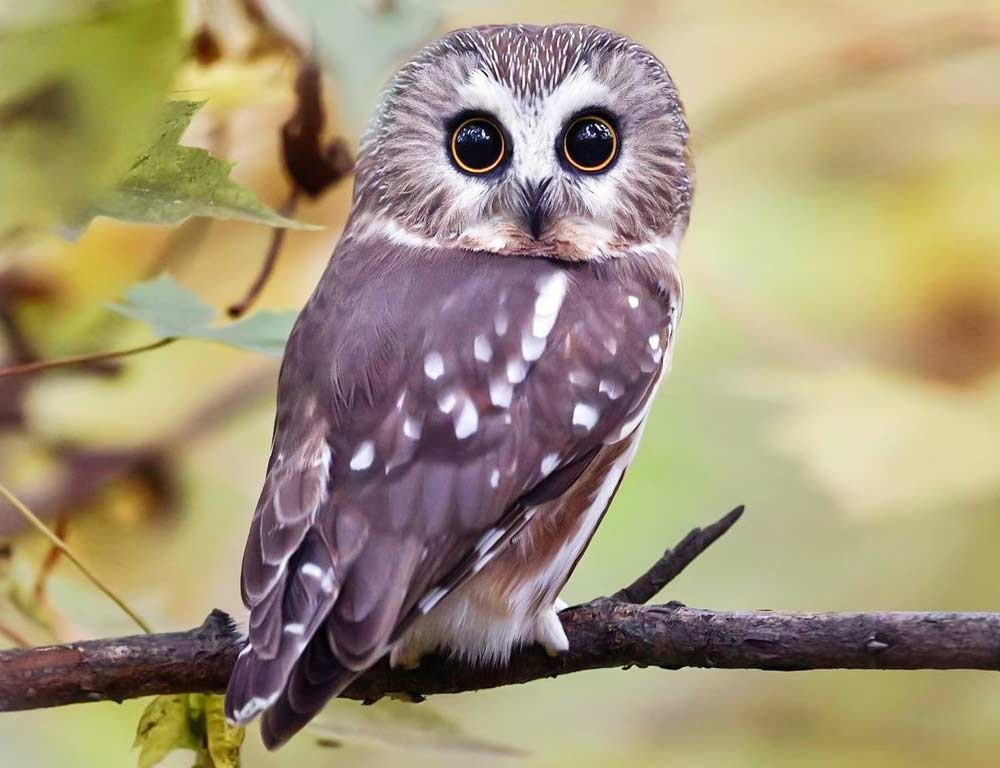
- Scientific name: Aegolius acadicus
- Life span: 3 to 7 years
- Size: 7 to 8 inches
- Weight: 2.5 to 5.3 ounces
- Food: Small mammals, birds, insects
- Wingspan: 16 to 18 inches
- Status: Uncommon
The Northern Saw-whet Owl, named after its repetitive sawing call, is a small and elusive owl species in Massachusetts. They prefer coniferous and mixed forests, where they roost in dense vegetation during the day.
Despite their small size, they are skilled hunters, feeding on small mammals, birds, and insects.
Northern Saw-whet Owls are nocturnal and use their excellent hearing to locate prey. They nest in tree cavities, relying on natural features or abandoned nests of other birds.
Due to their secretive nature and small size, Northern Saw-whet Owls can be challenging to spot, contributing to their classification as uncommon in the region.
8. Long-eared Owl
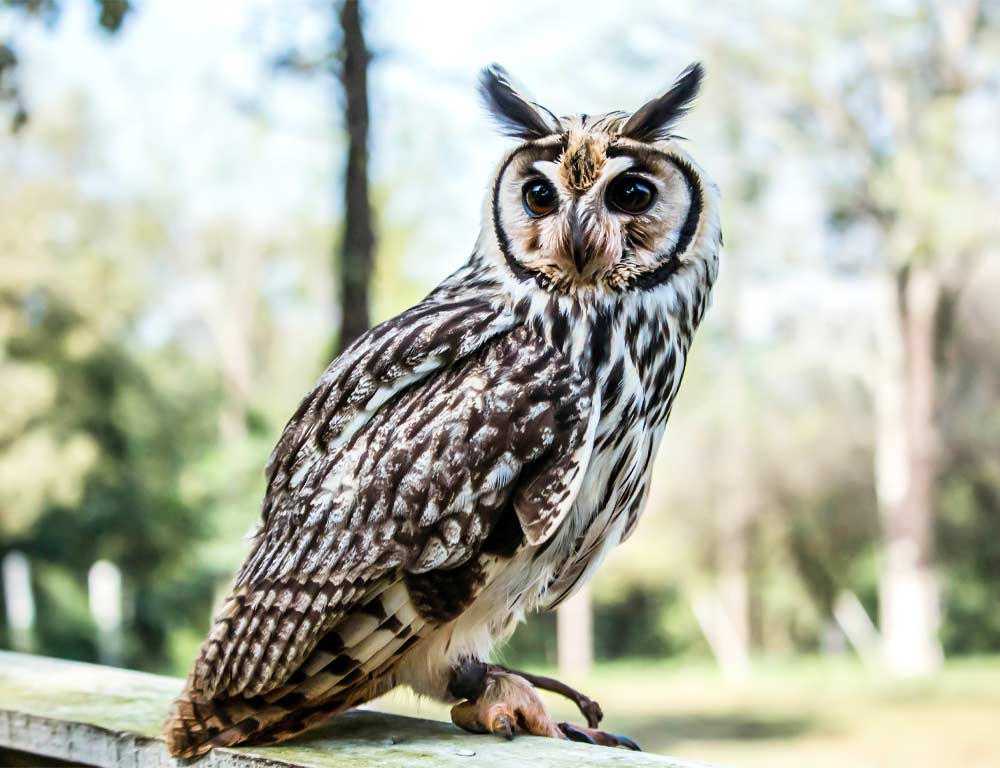
- Scientific name: Asio otus
- Life span: 4 to 10 years
- Size: 13 to 16 inches
- Weight: 7 to 15 ounces
- Food: Small mammals, birds
- Wingspan: 35 to 39 inches
- Status: Uncommon
The Long-eared Owl is a slender owl with distinctive “ear” tufts, despite being unrelated to their hearing. Found in woodlands and coniferous forests in Massachusetts, they are often tricky to spot due to their excellent camouflage.
Long-eared Owls are nocturnal hunters, preying on small mammals and birds. They are known for roosting communally in dense vegetation during the day, relying on cryptic plumage to avoid detection.
These owls are generally shy and tend to avoid human disturbances. While uncommon, they may be encountered in suitable habitats during the winter months.
9. Great Grey Owl
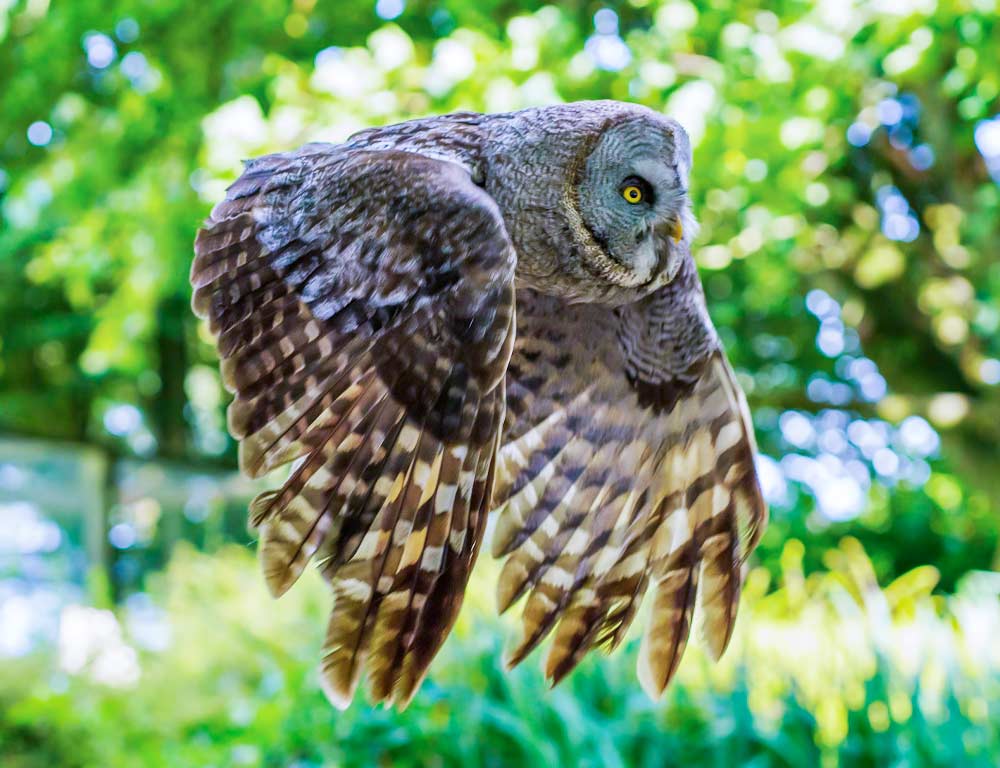
- Scientific name: Strix nebulosa
- Life span: 5 to 10 years
- Size: 24 to 33 inches
- Weight: 1.5 to 5 pounds
- Food: Small mammals, birds
- Wingspan: 54 to 60 inches
- Status: Rare, occasional winter visitor
With its large size and striking facial disk, the Great Grey Owl is a rare visitor to Massachusetts during the winter.
They typically inhabit northern forests and open areas. Great Grey Owls are diurnal hunters, relying on their keen eyesight to locate prey in daylight hours.
Their preferred diet consists of small mammals and birds. When visiting Massachusetts, they may be seen in open habitats, such as marshes and fields,
Despite their rarity in the region, their imposing appearance and hunting behavior make them a remarkable sight for bird enthusiasts fortunate enough to spot one during their occasional visits.
10. Burrowing Owl
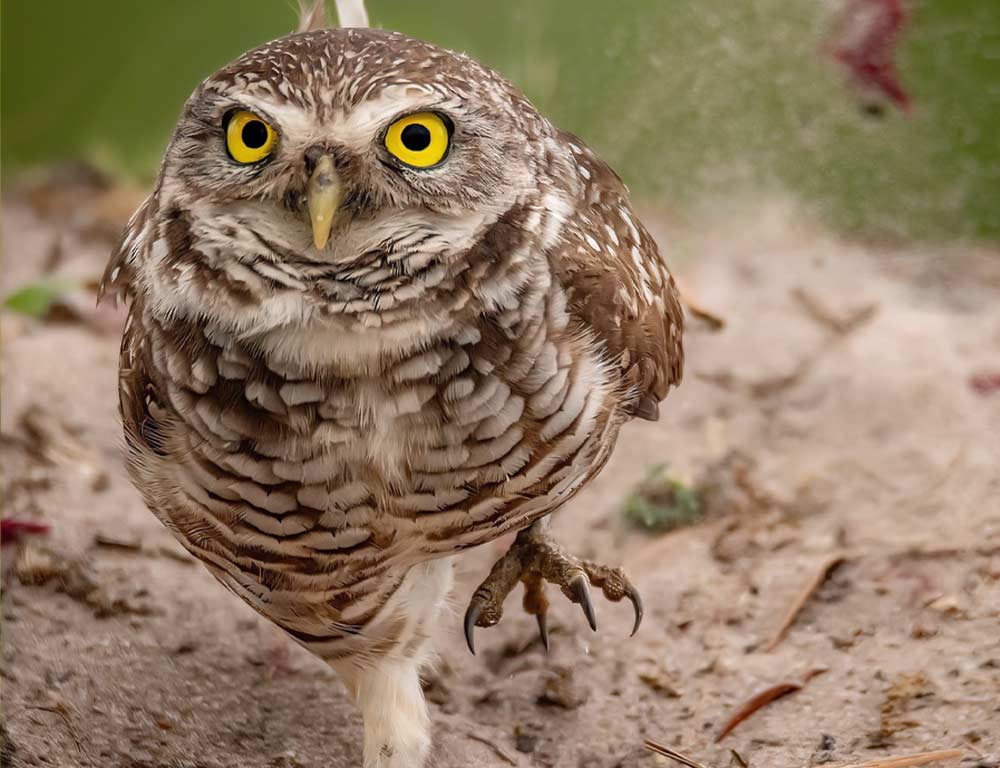
- Scientific name: Athene cunicularia
- Life span: 6 to 8 years
- Size: 7 to 10 inches
- Weight: 4 to 7 ounces
- Food: Insects, small mammals
- Wingspan: 21 to 24 inches
- Status: Rare, occasional visitor
The Burrowing Owl is an uncommon visitor to Massachusetts, occasionally spotted in open habitats such as grasslands and fields.
Unlike many owls, Burrowing Owls are active during the day and are often associated with burrows in the ground.
They primarily feed on insects and small mammals. In their native habitats, they may nest in abandoned burrows or use artificial structures.
Their small size, distinctive appearance, and unique burrowing behavior make them a sought-after species for bird watchers lucky to encounter them in the region.
11. Boreal Owl
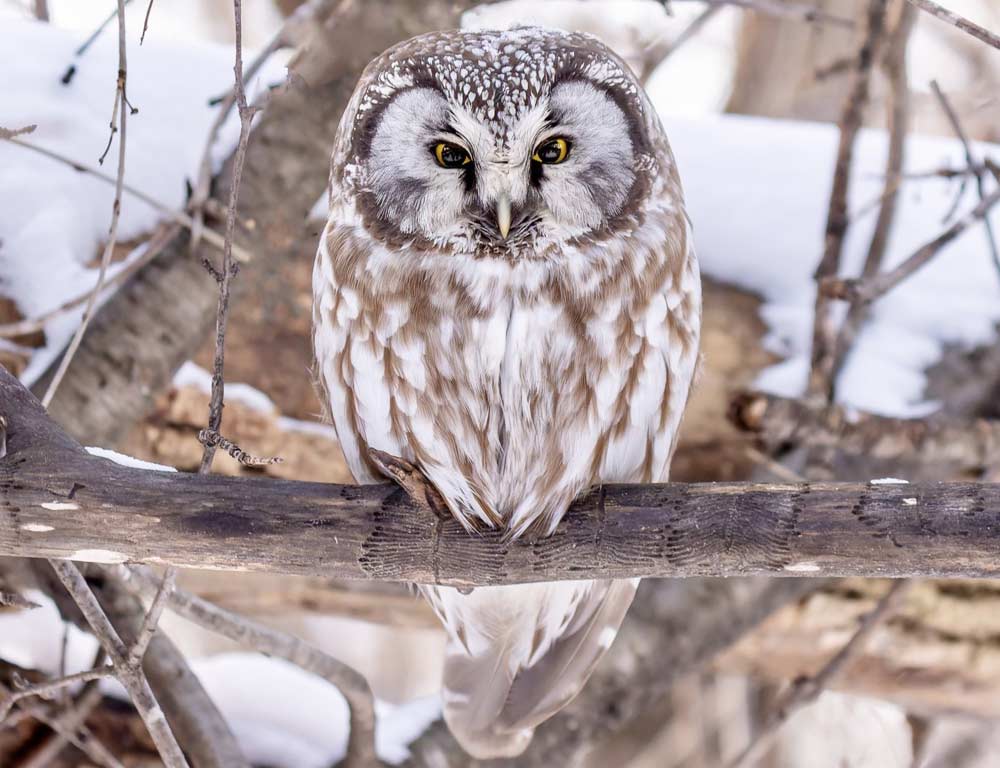
- Scientific name: Aegolius funereus
- Life span: 4 to 10 years
- Size: 8 to 12 inches
- Weight: 3 to 8 ounces
- Food: Small mammals, birds, insects
- Wingspan: 21 to 24 inches
- Status: Rare, occasional winter visitor
The Boreal Owl is a rare winter visitor to Massachusetts, preferring northern coniferous forests. They are small, with a round facial disk and bright yellow eyes.
Boreal Owls are nocturnal hunters, preying on small mammals, birds, and insects. They nest in tree cavities, often using abandoned woodpecker holes.
During winter, when their preferred prey is scarce in their northern habitats, they may migrate south, searching for food. Despite their rarity, bird enthusiasts occasionally encounter these owls in suitable habitats during the winter months.
Wrapping Up
In the enchanting realm of Massachusetts, the diverse owl species showcased contribute to the state’s ecological mosaic.
From the adaptable Great Horned Owl to the elusive Boreal Owl, these fascinating birds captivate with unique lifestyles, intriguing behaviors, and occasional visits.
Whether standard or rare, each owl plays a crucial role in the ecosystem’s delicate balance, reminding us of the rich biodiversity found in Massachusetts.
As guardians of the night, these feathered wonders symbolize the mystery and beauty of the state’s natural heritage.
Observing their habits in various habitats offers a glimpse into the intricate dance between predator and prey, predator and environment, shaping the dynamic narratives of Massachusetts’ avian residents. Thank you very much.